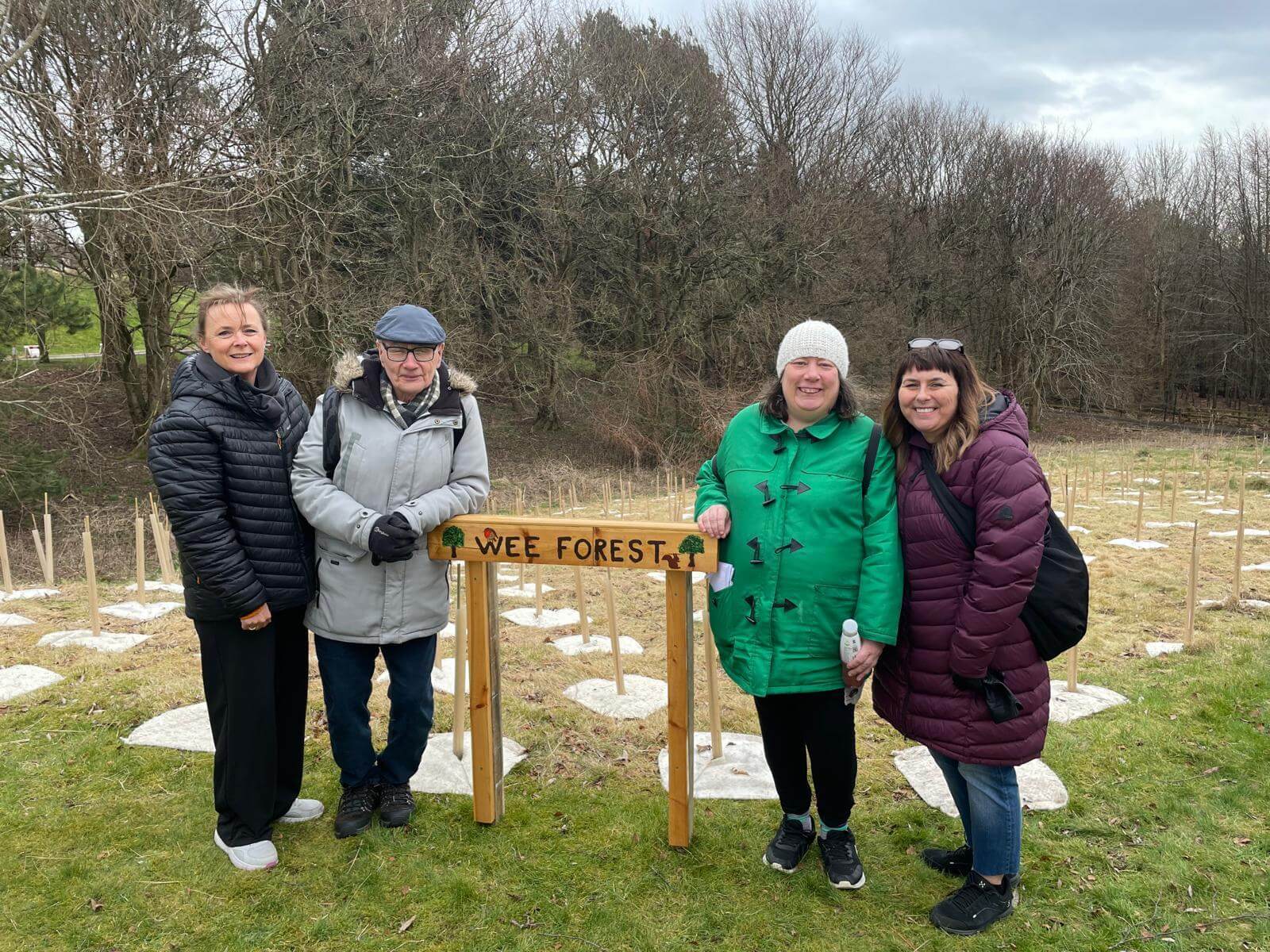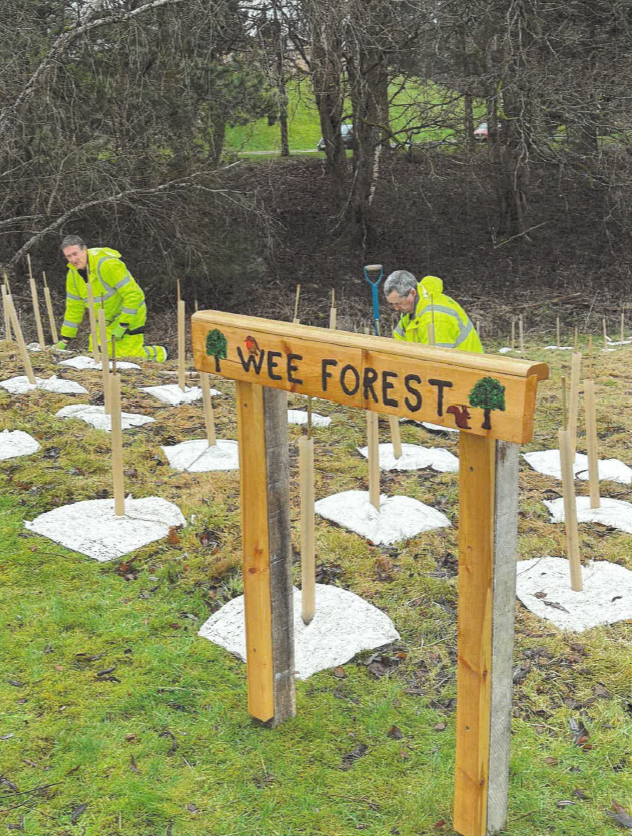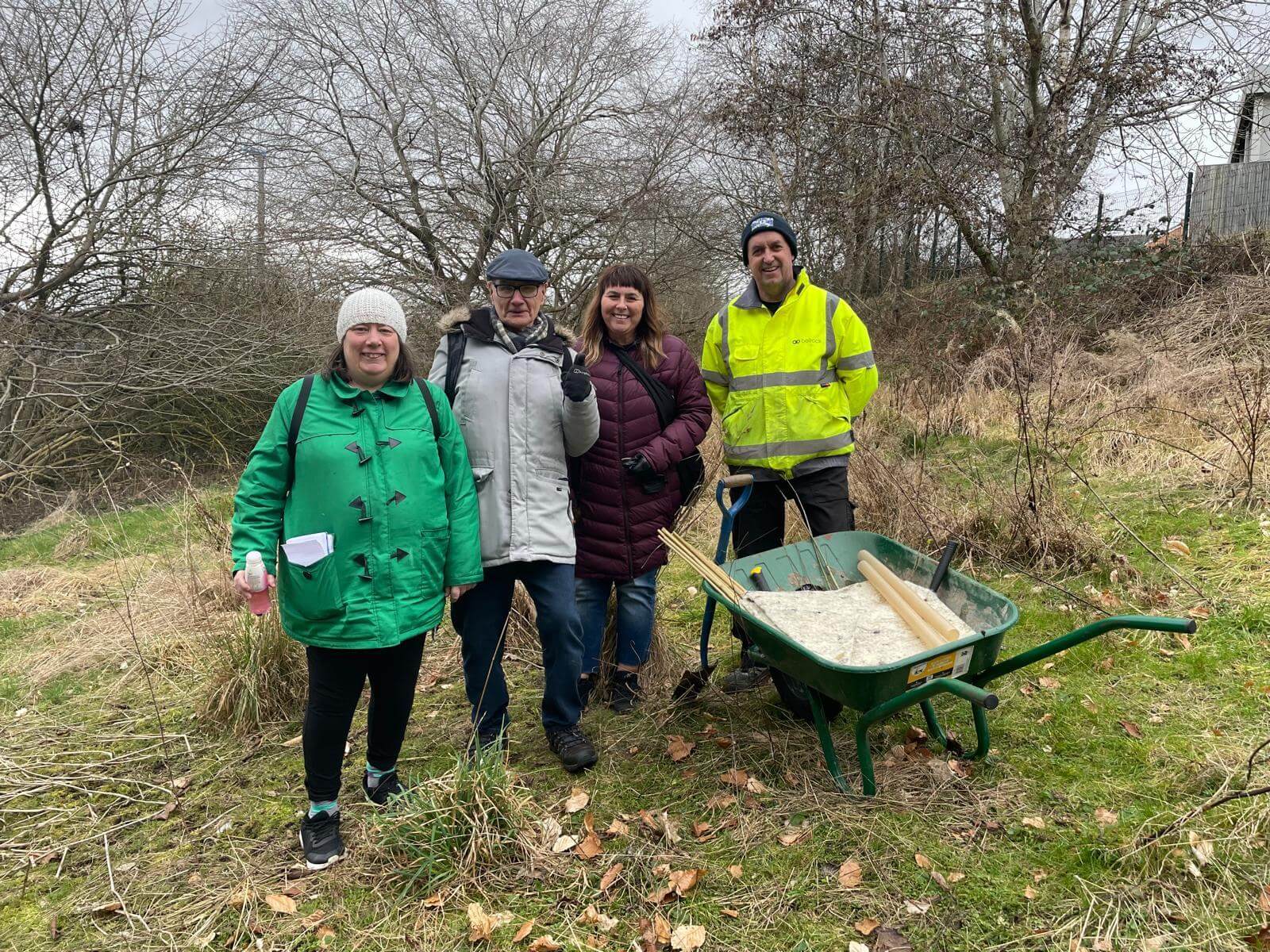Atos has supported the planting of 300 trees across healthcare sites in the UK in 2024-25
Atos is working in partnership with GreenTheUK and the NHS Forest to plant new trees at healthcare sites around the UK. The UK has an overwhelming lack of tree cover, and this project aims to plant trees in urban environments that will benefit both local communities and wildlife.
The benefits of urban trees are well documented. They remove air pollution, provide shade and cooler temperatures, reduce the risk of flooding, and so much more. Having access to urban green spaces has been shown to provide numerous health benefits too, such as alleviating stress and stabilising blood pressure. On top of it all - they’re aesthetically pleasing to look at, with the total aesthetic value of the UK's woodlands being put at around £2 billion - this is due to a variety of factors, such as as increasing property value, creating desirable greenspaces people want to be near, and improving quality of life for commuters travelling through tree-lined routes (Woodland Trust). Despite all of these benefits, there is unmistakable evidence of significant inequities in the distribution of tree canopy across urban areas in the UK. Green spaces remain one of our most overlooked health resources - estimates suggest the NHS could save up to £2.1 billion annually in treatment costs if everyone had access to high-quality green space (Sir James Bevan, Former Chief Executive of the Environment Agency).
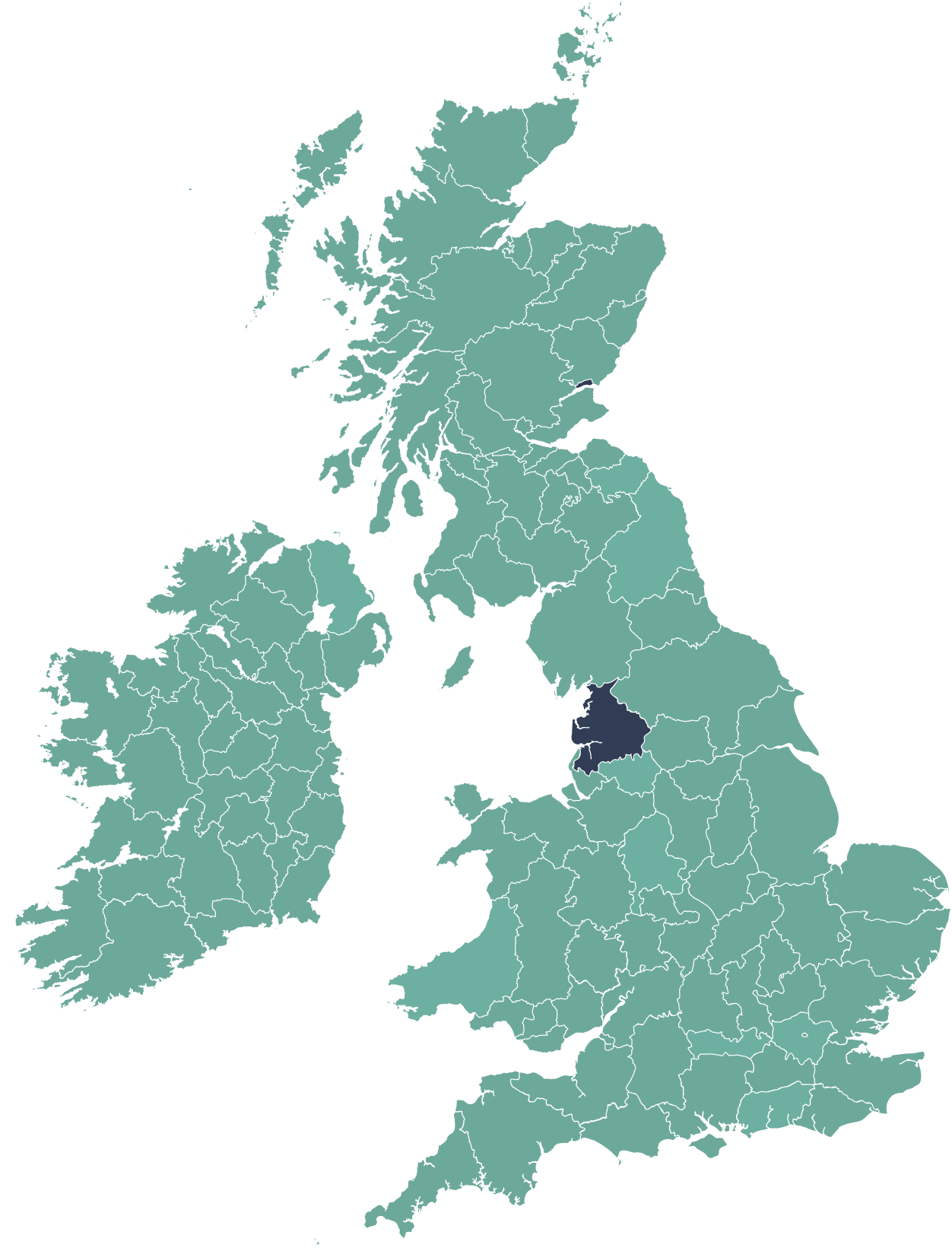
Many NHS healthcare sites are located in urban or semi-urban areas and serve a diverse cross-section of society. These spaces hold the potential to be equigenic—helping to reduce health inequalities by providing greater benefits to socioeconomically disadvantaged groups.
Often, a simple act like planting a small woodland area or hedge becomes a catalyst for wider green space improvements. Improving green spaces on healthcare sites showcases the health-giving potential of nature and demonstrates the physical and mental health benefits these environments offer. The two key objectives of the NHS Forest project are to:
- Improve Biodiversity – Enhance the ecological diversity of NHS estates by planting trees, contributing to local green infrastructure, and increasing the visibility and value of the NHS Green Estate.
- Enable Nature-Based Interventions (NBIs) – Make use of green space to support sustainable healthcare systems and provide therapeutic environments for patients, staff, and local communities.
Atos sponsored 300 trees in the 2024-25 planting season spread across two different NHS sites: Carseview Centre and Over Wyre Medical Centre. These trees will help increase canopy cover and will bring health benefits to staff and patients at their respective sites. They will also provide other ecosystem services such as: air filtration, supporting biodiversity, shade provision, all in all, supporting sites to become more resilient.
240 Trees Planted at Carseview Centre, Ninewells Hospital in Dundee, Scotland
240
Trees Planted
79
Local Tree Equity Score*
22%
Local Canopy Cover
100/187 in Dundee City
Tree Equity Score Ranking*
Ninewells Hospital joined the NHS Forest in 2012 and in February 2025 they significantly expanded their planting efforts, benefiting greatly from receiving Atos’ sponsored trees. The Carseview Centre, within the grounds of Ninewells Hospital, is where this planting took place; named the ‘Wee Forest’, it is made up of a mixture of 13 different native species.
The Carseview Centre is a mental health unit, managed by NHS Tayside. The centre provides care, treatment, and support within a multidisciplinary framework; including General Adult Psychiatry (GAP) acute admission wards and a Learning Disability Assessment Unit (LDAU) for people with learning disabilities.
The Ninewells site has a tree equity score of 79 (a map-based score that was created to help address disparities in urban tree distribution by identifying the areas in greatest need of people-focused investment in trees), and is listed as “high priority” for increasing canopy cover, ranked 100th of 187 Data Zones in Dundee City. In years to come the planting of these trees will help increase canopy cover in this area and help reduce the heat disparity faced in this area.
This nature focused woodland mix of 13 tree species incorporates compact trees such as alder, dogwood, goat willow and hawthorn with the potential to support a high level of biodiversity and to create a verdant habitat for birds and animals; the addition of blackthorn, crab apple, elder, hazel and rowan will provide opportunities for wild food foraging as the trees establish.
Tree Species Planted:
10 Trees Planted
Alder: Alnus Glutinosa
Alder can be found across Europe and thrives in moist ground and damp cool areas, which is why you’ll often see alder trees planted near rivers and ponds. Moth caterpillars love alder leaves and the tree’s roots make an ideal nesting site for otters. For humans, the real value of alder wood is that it’s durable when wet, so is useful for making boats and sluice gates. The story goes that outlaws like Robin Hood would have used the green dye from alder flowers to camouflage their clothing!

20 Trees Planted
Blackthorn: Prunus Spinosa
This small, thorny tree grows to around 5m tall and can be used in hedgerows. Its fruit - the sloe berry - looks a little like a small plum or damson and can be made into jam, jelly or even sloe gin. The blackthorn had a sinister reputation in mythology, where it was associated with witches.

15 Trees Planted
Crab Apple: Malus sylvestris
Crab apple trees grow throughout Europe and can live for up to a century, reaching a height of around 10m. This tree is traditionally associated with love and marriage, and it is said that if you say the name of your lover while throwing crab apple pips into a fire, then your love is true if the seeds explode! Crab apples can be made into jelly, roasted and added to drinks, or served as an accompaniment to meat.

10 Trees Planted
Dogwood: Cornus Alba
Dogwood thrives on the edges of damp woodlands and in hedgerows, so Britain’s wet climate really isn’t a problem for this fast-growing shrub. Mature dogwood trees can grow as high as 10m, with small blue-black fruits and little white flowers. It is one of the hardest woods there is, and was used to make crucifixes including - it is said - that of Jesus.

15 Trees Planted
Elder: Sambucus Nigra
Elder trees can be found growing all over the UK, often near rabbit warrens and the homes of other woodland creatures who spread the seeds through their droppings. Our ancestors in the Middle Ages believed that planting elder trees near their houses would ward off the Devil, and elder leaves were thrown into graves at funerals to protect the dead from evil spirits. Although poisonous when raw, elderberries can be cooked and made into syrup or jam, while elderflowers make the perfect refreshing summer cordial.

20 Trees Planted
Field Maple: Acer Campestre
This species is the UK’s only native maple and is often grown as an ornamental tree in large gardens and parks, as well as in woods and hedgerows. Its wood is white, hard and strong, and is popular for making furniture, flooring and musical instruments, especially harps. Field maple flowers are hermaphrodite, meaning each flower contains both male and female reproductive parts.

15 Trees Planted
Goat Willow: Salix Caprea
Goat Willow thrives in wet and damp environments such as riversides, reedbeds, lake shores and wet woodlands. Between January and March, Goat willow produces fluffy, silver flowers that turn yellow. Mature trees can grow up to 10m and live for 300 years. Goat Willow is the main food plant for the emperor butterfly and is eaten by the caterpillars. Birds also benefit from Goat Willow as they use it to forage for insects and caterpillars.

25 Trees Planted
Hawthorn: Crataegus Monogyna
Hawthorn is very much associated with the month of May, and the appearance of its bright, white flowers heralds the change from spring to summer. It is prolific in hedgerows, scrub and woodland throughout the UK and Ireland, and a single tree can grow as tall as 10m. In pagan times, hawthorn was a symbol of marriage and fertility, but in the Middle Ages, it was never brought into homes, as people believed it was a harbinger of illness and death.

40 Trees Planted
Hazel: Corylus Avellana
The common hazel is native to Europe and western Asia and forms an important part of England’s hedgerows. We have all heard of hazelnuts, which are rich in unsaturated fats and protein, and an extremely popular ingredient in many of the world’s cuisines. Did you know that hazel trees were once seen as both magical and a symbol of fertility?

20 Trees Planted
Pedunculate Oak: Quercus Robur
Also known as the common or English oak, this is the undisputed king of the woods, supporting more wildlife species than any other native tree in the UK. “Robur” in this oak’s Latin name means “strength” and “hard timber” because this tree produces incredibly durable wood which can be used to make many things, including furniture and flooring. The oak has been considered sacred by many gods in mythology throughout the ages.

20 Trees Planted
Rowan: Sorbus Aucuparia
Also known as the mountain ash, rowan trees grow well at high altitudes and are commonly found in the Scottish Highlands, as well as on streets and in gardens across the UK. Many birds eat their scarlet berries in the autumn, then disperse the seeds. Rowan used to be planted next to homes to ward off the threat of witches, as red was once believed to guard against evil.

25 Trees Planted
Silver Birch: Betula Pendula
The silver birch is an elegant, majestic-looking tree which can survive in a range of climates, making it a very popular choice for gardeners. It attracts hundreds of insect species, and woodpeckers like to nest in its rough, tough, silver-white trunk. There is a lot of mythology attached to the silver birch, which is said to symbolise purity, new beginnings and protection. Once upon a time, on Midsummer’s Eve, silver birch boughs were hung across the doors of houses to bring good luck to their residents.

5 Trees Planted
Wild Cherry: Prunus Avium
Stunning white cherry blossoms burst forth in April, heralding the arrival of spring and bringing joy to parks and gardens. Mature cherry trees can live for up to 60 years, and provide a great source of food for birds, bees, insects, and small animals like badgers and mice. Our ancestors would boil wild cherries and make them into a syrup to treat a range of ailments including coughs and anaemia.

Purpose and Impact
The Carseview Centre is committed to creating therapeutic, inclusive environments where recovery and participation are at the heart of care.
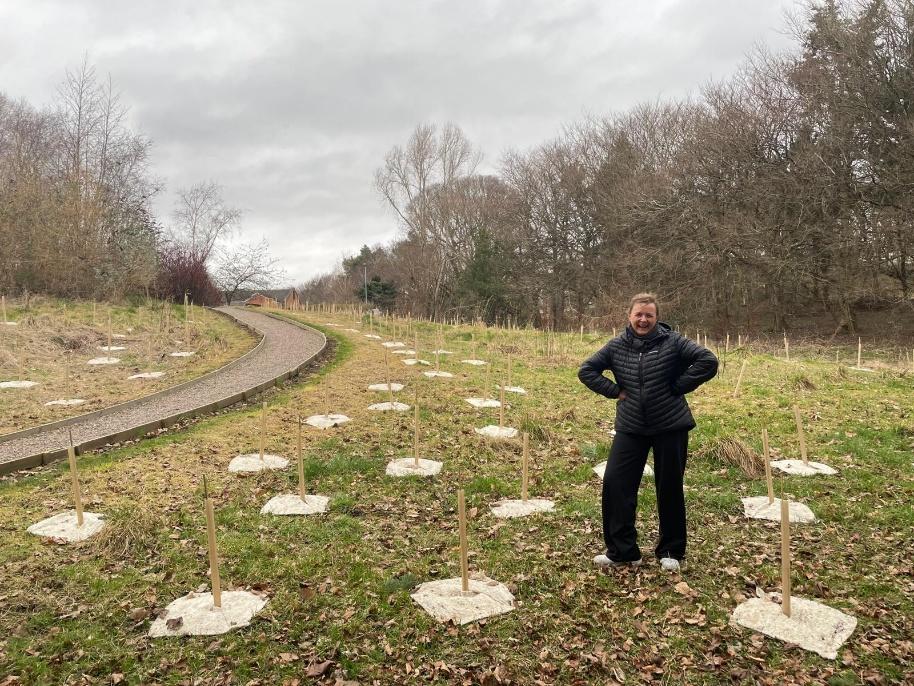

As part of this commitment, the development of the Carseview Recovery Garden has emerged as a major initiative to create meaningful outdoor spaces that promote mental health, connection to nature, and a sense of community.
The forest was planted following extensive planning and collaboration with local partners, who advised on tree layout, species groupings, and density. Their recommendations focused on maximising visual impact, supporting biodiversity, and creating an inviting space for patients, staff, and visitors. Key design features include blossom trees lining the garden pathways to enhance the beauty of spring along with a mix of native and fruiting species selected to support birdlife, pollinators, and a thriving, biodiverse habitat.
The “Wee Forest” has transformed a previously overgrown, uneven, and underused area of the garden. What was once a visual barrier has become a central, welcoming feature. Its desired outcomes include:
- Encouraging connection to nature as part of mental health recovery
- Supporting biodiversity, especially for birds and insects
- Providing seasonal colour, shade, and sensory interest year-round
- Offering a living metaphor for growth, healing, and hope
- Inspiring further creative, therapeutic, or mindful activity outdoors
This initiative forms part of the wider Carseview Recovery Garden project. Patients and staff from all wards have been actively involved in shaping the garden’s vision. Through creative sessions and informal discussions, many have shared how important nature is to their wellbeing and how they’d like to see the space developed to support recovery.
While exact numbers were not formally tracked during planting, participation has been wide-ranging, and the impact is already visible. Since the trees were planted, more individuals have been using the space—taking time to walk, sit, or simply enjoy the outdoors during breaks in care routines.
Future plans for the site include:
- Seasonal gardening sessions and creative outdoor activities
- Involving service users in wildlife monitoring and planting
- Continuing to develop the space as a therapeutic asset for patients, staff and visitors.
60 Trees Planted at Over Wyre Medical Centre, Lancashire, England
60
Trees Planted
51
Local Tree Equity Score*
1%
Local Canopy Cover
51/51 in the Wyre Area
Tree Equity Score Ranking*
A mixture of 5 different tree species were planted at Over Wyre Medical Centre.
These species were chosen to integrate native tree species into the site, facilitating wellbeing, and develop a green space in support of mental and physical health. All of the species are mid-sized trees selected for their visual qualities and intended as a focus point in natural therapeutic environments.
Over Wyre Medical Centre is situated in Lancashire, on the outskirts of Blackpool. Whilst it doesn’t receive a tree equity score itself (due to being in a less urban area), the nearest score, 2km west across the Wyre River, is the lowest in the Wyre area ranking 51 out of 51, coincidentally with a tree equity score of 51. Tree canopy cover in this statistical region is at 1-3% compared to the national canopy cover goal of 24%, making it highly suitable for tree planting.
To protect against damage by small mammals, the trees were planted using Rainbow Terra tree wraps – a next generation tree shelter made from 100% plant-based, non-toxic materials (British grown wood fibre and plant resin) certified to be fully biodegradable in soil; and to help with chemical free weed suppression NHS Forest supplied mulch mats made of British wool, also biodegradable in situ.
Tree Species Planted:
10 Trees Planted
Crab Apple: Malus sylvestris
Crab apple trees grow throughout Europe and can live for up to a century, reaching a height of around 10m. This tree is traditionally associated with love and marriage, and it is said that if you say the name of your lover while throwing crab apple pips into a fire, then your love is true if the seeds explode! Crab apples can be made into jelly, roasted and added to drinks, or served as an accompaniment to meat.

10 Trees Planted
Hazel: Corylus Avellana
The common hazel is native to Europe and western Asia and forms an important part of England’s hedgerows. We have all heard of hazelnuts, which are rich in unsaturated fats and protein, and an extremely popular ingredient in many of the world’s cuisines. Did you know that hazel trees were once seen as both magical and a symbol of fertility?

20 Trees Planted
Rowan: Sorbus Aucuparia
Also known as the mountain ash, rowan trees grow well at high altitudes and are commonly found in the Scottish Highlands, as well as on streets and in gardens across the UK. Many birds eat their scarlet berries in the autumn, then disperse the seeds. Rowan used to be planted next to homes to ward off the threat of witches, as red was once believed to guard against evil.

10 Trees Planted
Silver Birch: Betula Pendula
The silver birch is an elegant, majestic-looking tree which can survive in a range of climates, making it a very popular choice for gardeners. It attracts hundreds of insect species, and woodpeckers like to nest in its rough, tough, silver-white trunk. There is a lot of mythology attached to the silver birch, which is said to symbolise purity, new beginnings and protection. Once upon a time, on Midsummer’s Eve, silver birch boughs were hung across the doors of houses to bring good luck to their residents.

10 Trees Planted
Wild Cherry: Prunus Avium
Stunning white cherry blossoms burst forth in April, heralding the arrival of spring and bringing joy to parks and gardens. Mature cherry trees can live for up to 60 years, and provide a great source of food for birds, bees, insects, and small animals like badgers and mice. Our ancestors would boil wild cherries and make them into a syrup to treat a range of ailments including coughs and anaemia.

Purpose and Impact
The NHS Estate is increasingly varied with both small and large sites. As such, choosing species and numbers for the tree planting takes into account all factors, especially available space. Many NHS sites have only a small amount of space available for green initiatives, and the Over-Wyre medical centre is a prime example of successful planting in a small space. Despite the small area, the mixture of trees will provide shade and support vast amounts of biodiversity in years to come, highlighting the impact this project can have regardless of land available.
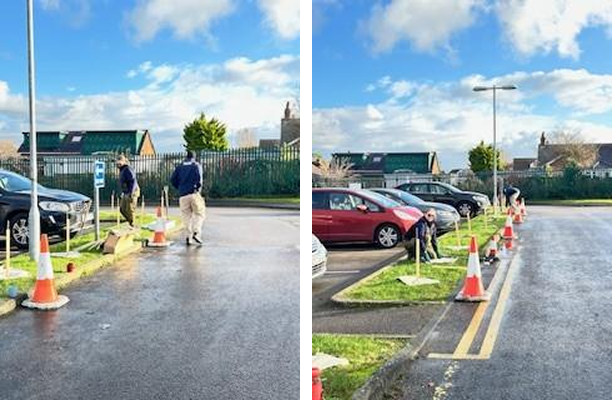
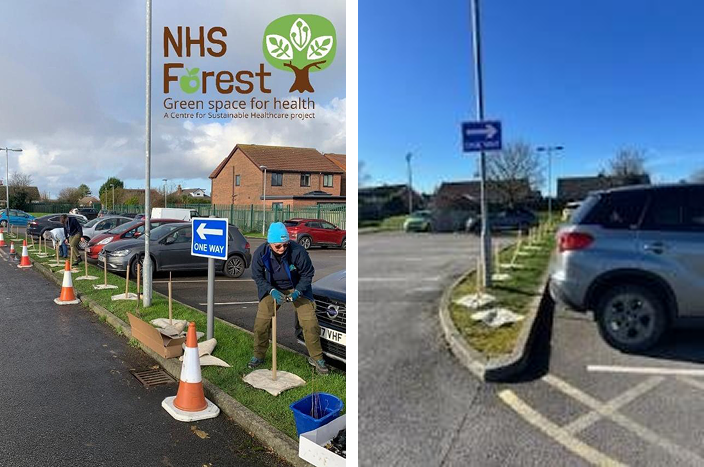

UN's Sustainable Development Goals
As a GreenTheUK partner, you support projects that are in line with the UN Sustainable Development Goals.

Take urgent action to combat climate change and its impacts.

Sustainably manage forests, combat desertification, halt and reverse land degradation, halt biodiversity loss.




